Estonian Christmas Traditions
Welcome to the magical world of Estonian Christmas traditions! With unique customs and rituals, the holiday season in Estonia is truly special. As European Christmas traditions go, Estonia’s enchanting celebrations that make Estonian Christmas one of a kind.
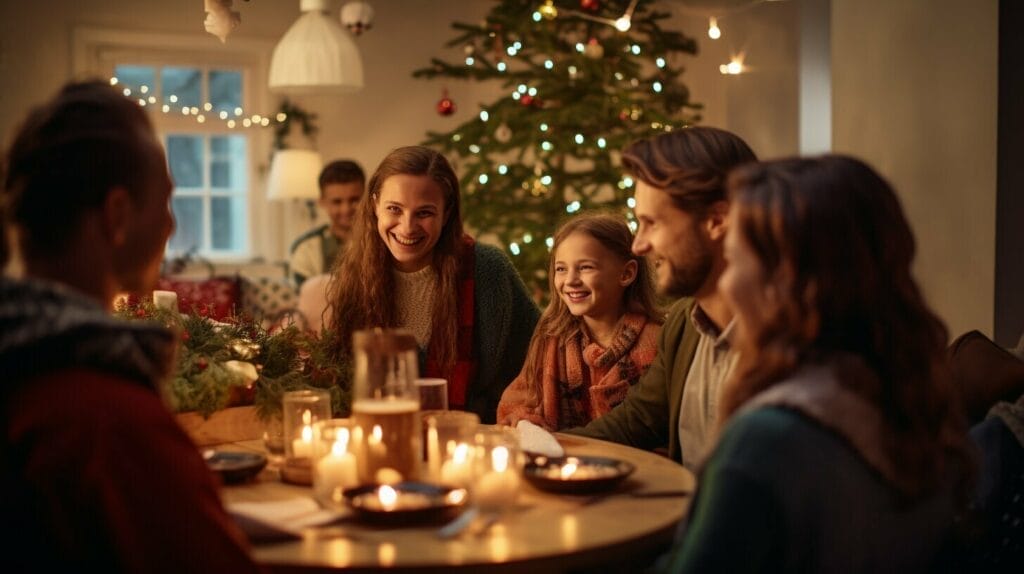
Quick Summary
- Estonian Christmas traditions are rich with unique customs and rituals.
- The holiday season in Estonia is filled with joy and celebration.
- From advent calendars to Jõuluvana, Estonians have many fascinating Christmas traditions.
- Winter solstice traditions and sauna rituals are a significant part of Estonian Christmas celebrations.
- Estonian Christmas cuisine, including blood sausage and sauerkraut, is mouth-watering.
Jõulud: The Estonian Christmas Celebration
Get ready to revel in the festive spirit as we explore the traditions of Jõulud, the Estonian word for Christmas. The month-long Christmas season in Estonia is a time of joy and celebration, complete with unique customs and traditions that are sure to enchant you.
The season of Jõulud kickstarts on December 1st in Estonia, when the first candle on the advent wreath is lit. Advent calendars are also commonly used to count down the days until Christmas.
The most important day of the Jõulud season is Jõululaupäev, or Christmas Eve, which is celebrated on December 24th. On this day, Estonians attend church and then gather with their families for a festive meal. The meal typically consists of pork, blood sausage, sauerkraut, potato salad, and black pudding. For dessert, gingerbread cookies, marzipan, and cranberry pudding are enjoyed. Mulled wine is also a popular drink during this time of year.
The highlight of the Jõulud season for children is the arrival of Jõuluvana, the Estonian Santa Claus. Jõuluvana is believed to live in the forests of Lapland and comes bearing gifts for children on Christmas Eve.
Winter solstice traditions are also an important part of the Jõulud season in Estonia. Sauna rituals, where people gather to heat up and cleanse their bodies, are especially popular during this time of year.
If you happen to be in Estonia during the Jõulud season, make sure to check out the Christmas markets in Tallinn, Tartu, and other towns. These markets offer an array of handmade gifts and traditional Estonian foods, such as gingerbread cookies, mulled wine, and blood sausage.
Overall, the Jõulud season in Estonia is a time of warmth, togetherness, and merriment. So embrace the festivities and immerse yourself in the enchanting world of Estonian Christmas traditions.
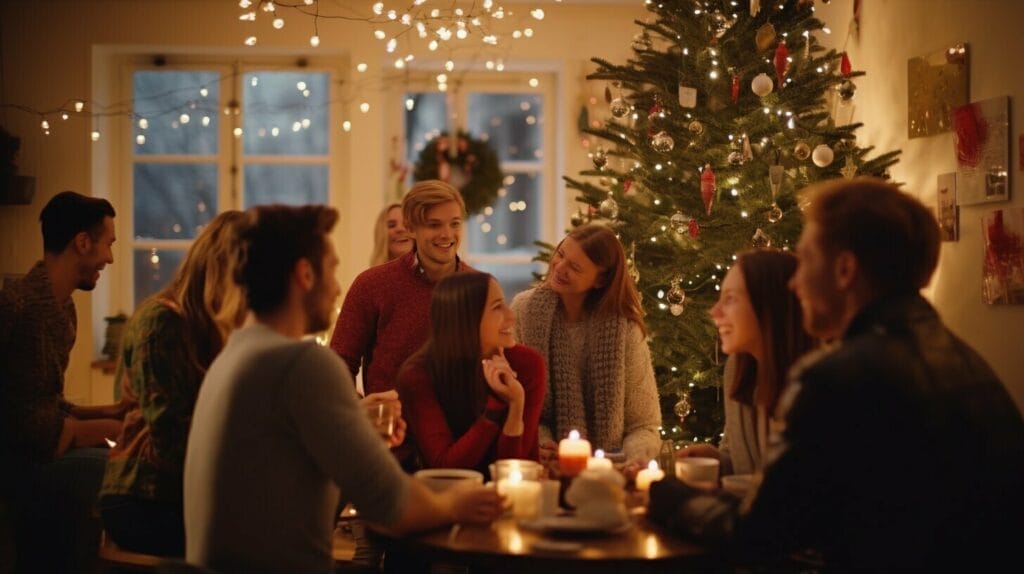
One of the most exciting parts of the holiday season in Estonia is the countdown to Christmas. Advent calendars are a popular way to keep track of the days until Jõululaupäev, or Christmas Eve. These calendars can be found in many different shapes and sizes, from traditional cardboard ones with chocolates hidden inside to ornate wooden structures with drawers for small gifts.
Jõululaupäev is an especially important day in Estonia, as it marks the beginning of the Christmas celebrations. Families gather together for a festive meal, often featuring traditional dishes like roast pork and blood sausage. After dinner, they attend church services and then return home to exchange gifts and spend time together.
In addition to advent calendars and Jõululaupäev, Estonians also celebrate St. Lucy’s Day on December 13th and St. Thomas’s Day on December 21st. Both days are associated with the winter solstice and are marked by special customs and rituals.
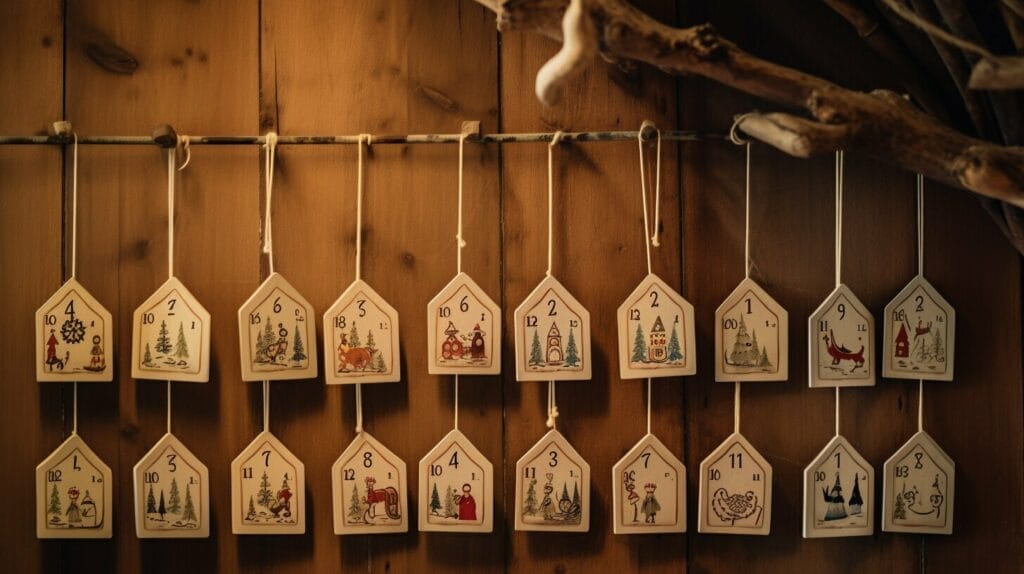
Jõuluvana, the Estonian Santa Claus
Meet Jõuluvana, the Estonian Santa Claus, who brings joy and merriment to children during the holiday season. Unlike the North American Santa Claus who travels in a sleigh pulled by reindeer, Jõuluvana arrives in Estonian homes on a sled pulled by horses. Dressed in a warm fur coat and carrying a large sack of presents, he is a familiar and beloved figure in Estonian holiday celebrations.
Children eagerly wait for Jõuluvana to arrive on Christmas Eve, but they must first earn their presents by reciting a poem or singing a song. In some parts of Estonia, Jõuluvana even asks children to perform a small task or solve a riddle before handing over the gifts.
In addition to delivering presents on Christmas Eve, Jõuluvana is also a popular figure at Christmas markets and events throughout Estonia. You may even catch a glimpse of him at the annual Tallinn Christmas market, where visitors can sample traditional Estonian foods, enjoy festive music and dance performances, and browse stalls selling handmade crafts.

Jõuluvana is an integral part of Estonian Christmas traditions and adds a touch of magic and excitement to the holiday season. So, make sure you’re on your best behavior and recite that poem, because you never know when Jõuluvana may come knocking on your door with a sack full of presents!
Winter Solstice Traditions and Sauna Rituals
Winter solstice has long been celebrated as a time of renewal and new beginnings. In Estonia, it is a time to honor old traditions and customs that have been passed down through the generations. One such tradition is the use of saunas during the holiday season.
The sauna has been a central part of Estonian culture for centuries. It is a place of relaxation, cleansing, and healing. During the winter solstice, Estonians enjoy the rejuvenating properties of the sauna even more so. Sitting in the sauna with family and friends is a cherished pastime that is believed to bring good health and good luck.
According to Estonian folklore, the sauna is a sacred place where the gods reside. It is believed that spirits and ghosts wander the earth during the winter solstice, and the sauna is a place of safety and refuge from these otherworldly beings. By taking a sauna during this time of year, Estonians not only cleanse their bodies but also protect themselves from evil spirits.
Aside from sauna rituals, Estonians also celebrate the winter solstice with a variety of customs and traditions. They enjoy traditional foods, such as black pudding and mulled wine, and engage in fortune-telling rituals to predict their future. These practices are believed to bring good luck and prosperity in the new year.
As you can see, the winter solstice plays an important role in Estonian culture, and saunas are a significant part of this celebration. Whether you partake in sauna rituals or not, there are plenty of other winter solstice traditions to explore and enjoy during your time in Estonia.
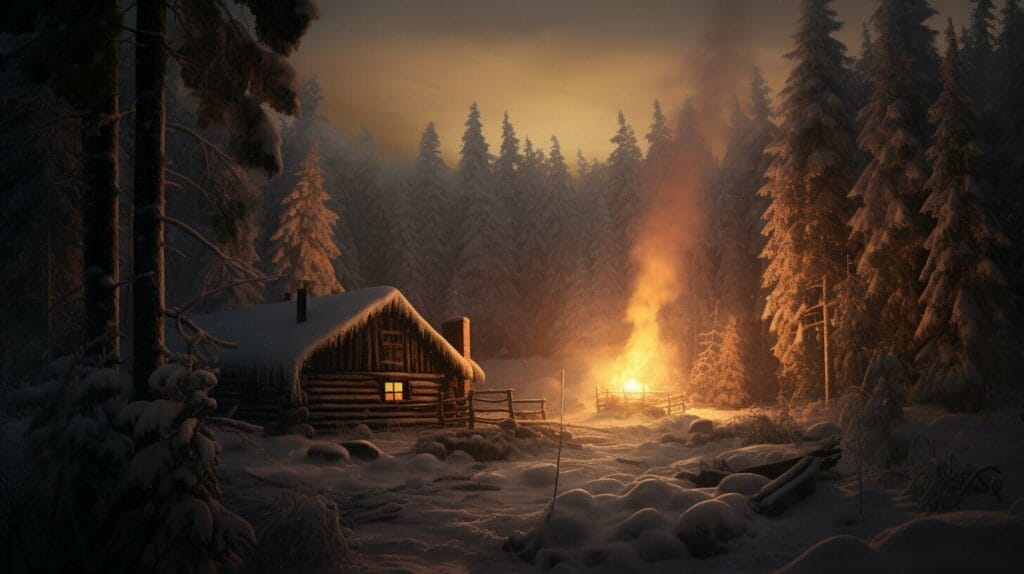
Estonian Christmas cuisine
When it comes to Estonian Christmas cuisine, there are some must-try dishes that will transport your taste buds to a whole new level of flavor and satisfaction. Blood sausage and sauerkraut are two staples that you will find on most Estonian Christmas tables, and they are sure to leave you feeling warm and cozy inside.
| Dish | Description |
|---|---|
| Blood sausage | This sausage is made from a mixture of pork blood, barley or buckwheat, and spices. It is usually served with lingonberry jam and potatoes. |
| Sauerkraut | This dish consists of fermented cabbage that is cooked with bacon or pork, onions, and caraway seeds. It pairs well with blood sausage and other pork dishes. |
Another must-try Estonian Christmas dish is mulled wine. Made with red wine, spices, and honey, this warm and aromatic beverage is perfect for cozying up in front of the fireplace on a cold winter night.
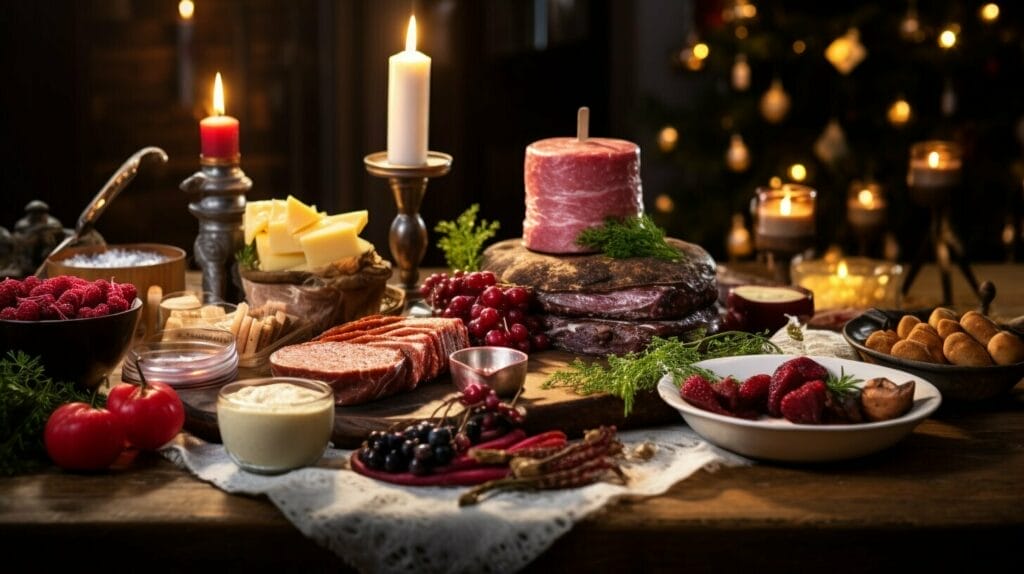
Whether you’re a foodie or just looking to try something new this holiday season, be sure to get a taste of Estonia’s unique and flavorful Christmas cuisine. Your taste buds will thank you!
Näärid, Talvistepüha, and Christmas Markets
As the winter solstice approaches, Estonia comes alive with festive cheer and delight. The winter holidays in Estonia are comprised of two unique celebrations: Näärid and Talvistepüha. Näärid, which translates to “the days of Christmas,” is a time of reflection and introspection, a time when families come together to share stories, drink warm beverages, and feast on traditional Estonian foods.
Talvistepüha, which means “winter holiday,” is a more modern celebration that falls on December 25th. This day is a time for families to exchange gifts, visit loved ones, and attend festive events throughout the country.
One of the most enchanting aspects of the Estonian holiday season is the prevalence of Christmas markets. These markets can be found throughout the country and offer an array of handmade gifts, traditional Estonian foods, and warm mulled wine. The markets are often held in city centers or town squares and are a perfect way to experience the holiday spirit of Estonia.
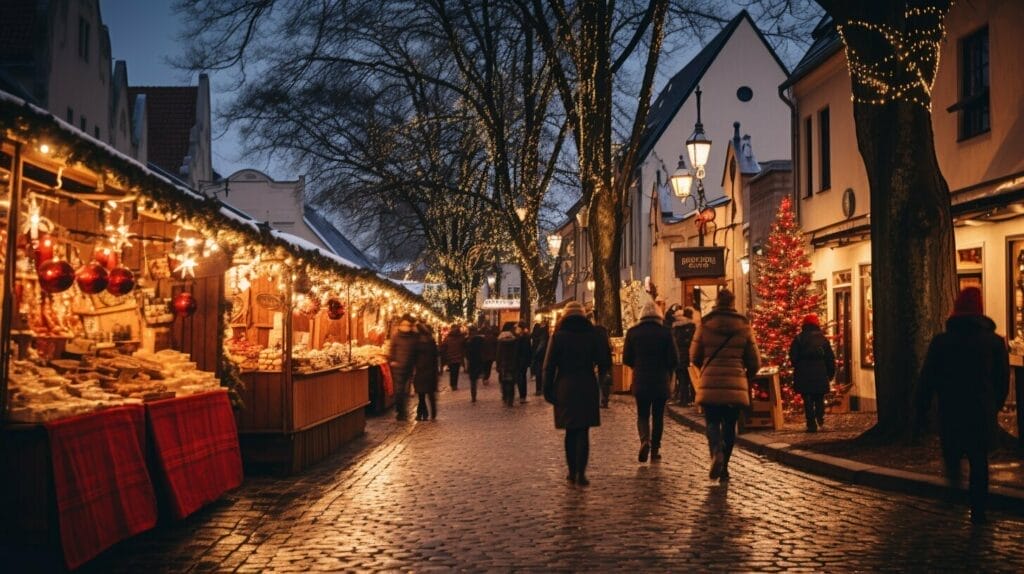
The Tallinn Christmas Market is one of the most popular in Estonia and was voted the best Christmas market in Europe in 2019. The market is held in the historic Town Hall Square and features over 100 vendors selling traditional Estonian crafts, food, and drinks. Visitors can enjoy ice skating, live performances, and even meet with Santa Claus himself.
No matter where you are in Estonia during the holiday season, you are sure to find festive events and activities that will make your holiday season unforgettable. From the cozy warmth of Näärid to the excitement of Talvistepüha and the enchanting Christmas markets, Estonia is the perfect place to celebrate the holidays.
An Array of Festive Traditions
As the holiday season in Estonia approaches, many unique and fascinating traditions begin to unfold. From St. Thomas’s Day on December 21st to Epiphany on January 6th, there is no shortage of festive customs to discover.
On St. Thomas’s Day, Estonians commemorate the winter solstice with the lighting of candles and the making of straw ornaments. It is believed that the more candles that burn brightly, the shorter the winter will be.
Epiphany, also known as Three Kings’ Day, is an important Christian holiday celebrated on January 6th. In Estonia, it is customary to bless the home and those who live within it with holy water.
St. Canute’s Day on January 13th is a day of remembrance for the patron saint of Denmark, and Estonians celebrate with bonfires and fortune-telling rituals.
Another beloved Estonian holiday tradition is the making of gingerbread cookies, known as piparkoogid. Families often gather together to bake and decorate the cookies, which are then used to adorn the Christmas tree or given as gifts.
The Brotherhood of Blackheads is a historical fraternal organization that dates back to the 14th century. During the holiday season, their Christmas market in Tallinn is a must-see attraction. Here you can find handmade crafts, traditional foods, and plenty of festive cheer.
These are just a few examples of the many holiday traditions that make the Estonian Christmas season so unique and enchanting. Whether you are a local or a visitor to this beautiful country, be sure to fully immerse yourself in the magic of the holiday season.
FAQ
What are some unique Estonian Christmas traditions?
Estonian Christmas traditions include the celebration of Jõulud, the Estonian word for Christmas, advent calendars, Jõululaupäev (Christmas Eve), the character of Jõuluvana (Estonian Santa Claus), winter solstice traditions, sauna rituals, traditional Christmas foods like blood sausage and sauerkraut, mulled wine, midwinter holidays like Näärid and Talvistepüha, Christmas markets, and a range of other festive traditions such as St. Thomas’s Day, Epiphany, St. Canute’s Day, fortune-telling rituals, the making of gingerbread, and the historical significance of the Brotherhood of Blackheads.
What is Jõulud?
Jõulud is the Estonian word for Christmas. It is a time of joy and celebration in Estonia, marked by various customs and traditions.
How do Estonians count down to Christmas?
Estonians count down to Christmas using advent calendars, which help build excitement and anticipation for the festive season. The countdown culminates on Jõululaupäev, Christmas Eve, which holds great importance in Estonian Christmas celebrations.
Who is Jõuluvana?
Jõuluvana is the Estonian Santa Claus. He is a unique character who brings joy to children during the holiday season, delivering gifts and spreading Christmas cheer.
What are some winter solstice traditions in Estonia?
Estonia has ancient pagan traditions associated with the winter solstice. These traditions often involve bonfires, songs, dances, and other rituals to celebrate the return of longer days and the overcoming of darkness.
How do Estonians enjoy the sauna during the holiday season?
Sauna rituals are an integral part of Estonian culture, especially during the holiday season. Many Estonians enjoy the sauna during Christmas time, finding it a relaxing and rejuvenating experience.
What are some traditional Estonian Christmas foods?
Traditional Estonian Christmas foods include dishes like blood sausage and sauerkraut, which are rich in flavor and enjoyed during the festive season. Additionally, warm and aromatic mulled wine is a popular beverage during this time.
What are Näärid and Talvistepüha?
Näärid and Talvistepüha are midwinter holidays celebrated in Estonia. They bring joy and festivity to the holiday season, with various traditions and activities taking place. Additionally, Christmas markets come alive with festive cheer and delightful treats during this period.
What are some other festive traditions in Estonia?
Estonia has a diverse range of festive traditions, including the celebration of St. Thomas’s Day, Epiphany, St. Canute’s Day, fortune-telling rituals, the making of gingerbread, and the historical significance of the Brotherhood of Blackheads. These traditions add unique elements to the Estonian Christmas experience.




